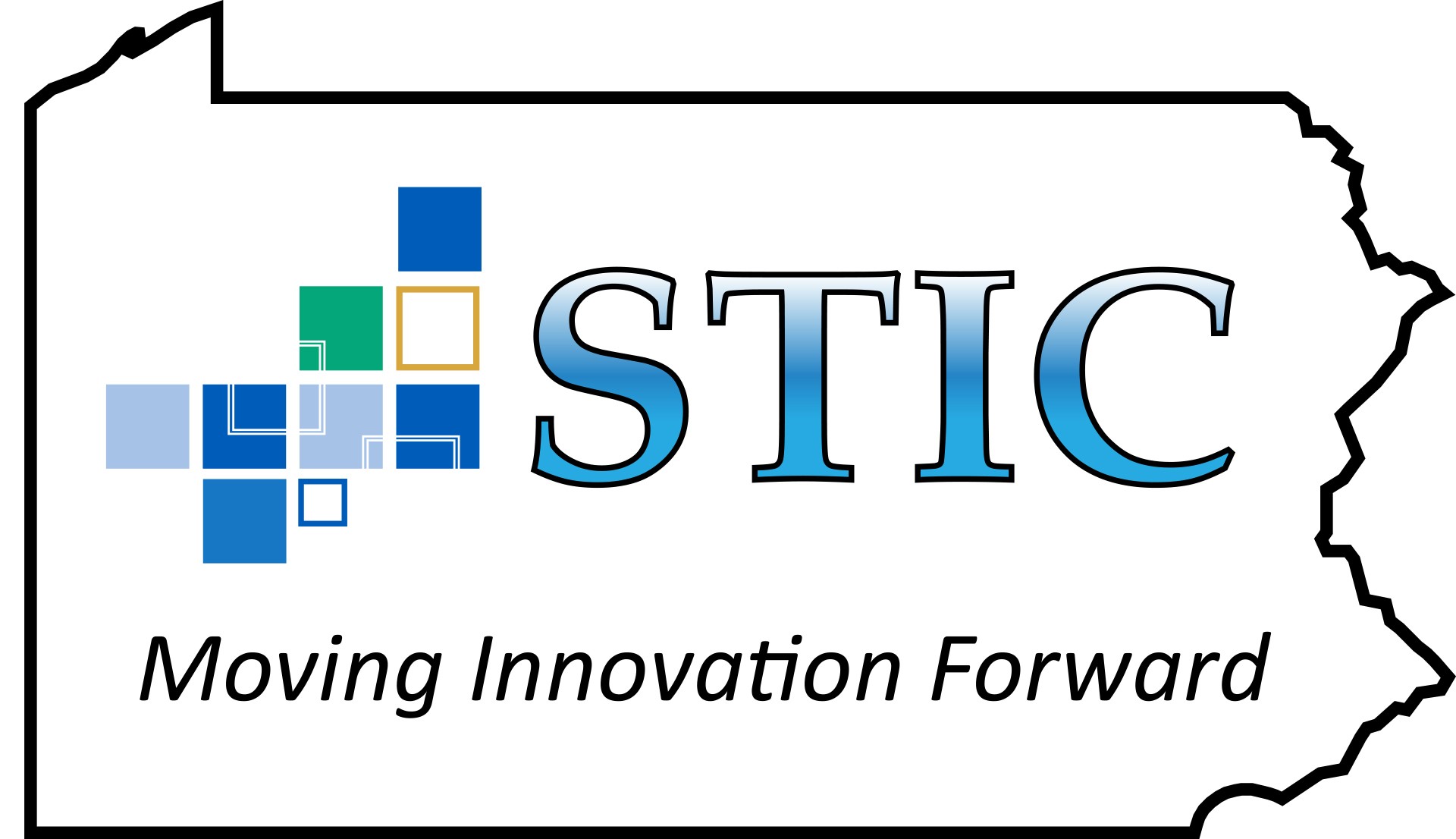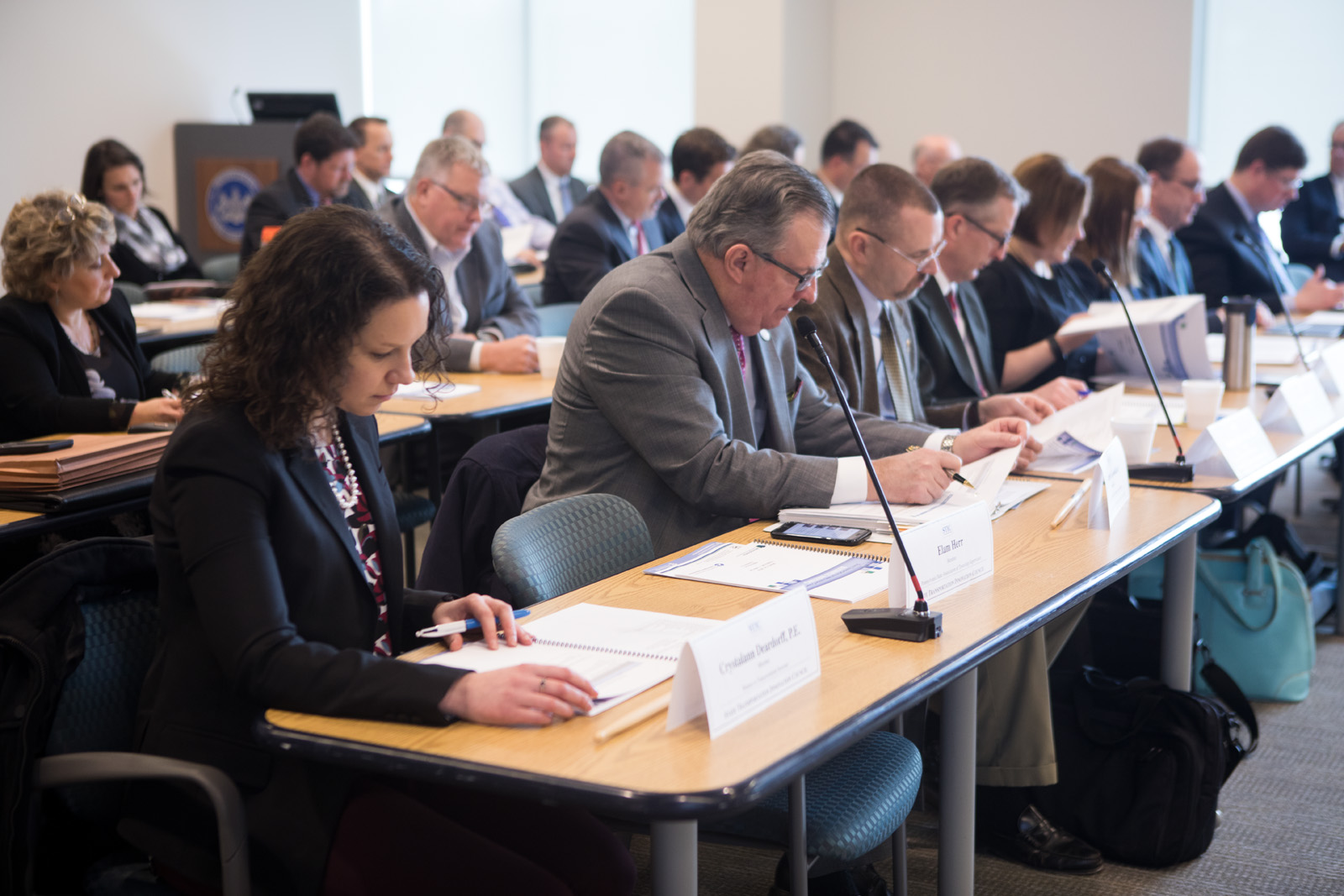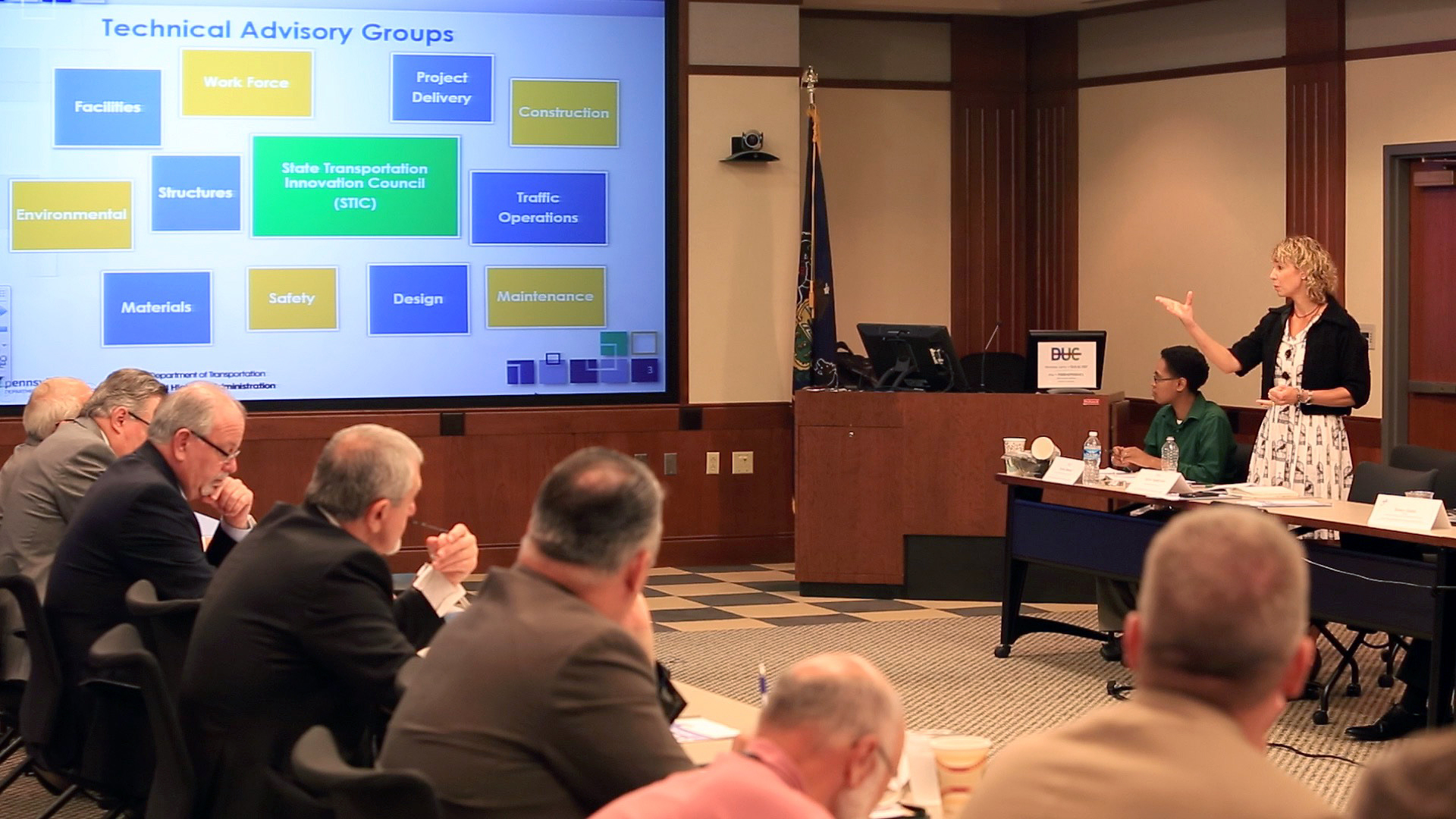 Government officials who are serious about public service understand the challenge of explaining how critical adequate resources are to addressing pressing needs. This is especially true for infrastructure, and Pennsylvania was very fortunate that key federal and state leaders aligned in 2012 to commence a long-lasting transportation effort to foster efficiencies and innovation. The result was the creation of the
State Transportation Innovation Council (STIC), which celebrates its 10th anniversary this year. Still going strong, STIC has built a legacy of transformative approaches to design, construction, maintenance and safety and traffic operations. STIC has brought together federal, state and local governments, industry and transportation advocates to share grassroots generated innovations that have improved services and saved taxpayer dollars.
Government officials who are serious about public service understand the challenge of explaining how critical adequate resources are to addressing pressing needs. This is especially true for infrastructure, and Pennsylvania was very fortunate that key federal and state leaders aligned in 2012 to commence a long-lasting transportation effort to foster efficiencies and innovation. The result was the creation of the
State Transportation Innovation Council (STIC), which celebrates its 10th anniversary this year. Still going strong, STIC has built a legacy of transformative approaches to design, construction, maintenance and safety and traffic operations. STIC has brought together federal, state and local governments, industry and transportation advocates to share grassroots generated innovations that have improved services and saved taxpayer dollars.
Karyn Vandervoort, now a technology transfer specialist with the Innovation and Research section of the Federal Lands Highway Office within the Federal Highway Administration (FHWA), played a key role in creating the STIC. She said the STIC idea came from Gregory Nadeau, FHWA administrator and later DOT Deputy Secretary, a former Maine DOT CEO and a former legislator.
"It goes to the history, timing and aligning of the stars that happened all at once," Vandervoort said. The STIC idea grew from
FHWA's Every Day Counts program, which was intended to drive grassroots innovation efforts.
"The original vision as put out by FHWA was to bring public and private transportation stakeholders and academia together to evaluate existing innovations not widely used and spearhead their development," said Renee Sigel, former Pennsylvania division administrator for FHWA, who also was instrumental in advancing the Pennsylvania STIC.
"They knew there had to be more to it than FHWA pushing things out," Vandervoort said. Hence, she added, the notion emerged of a state council that would foster innovations locally, and the states would have leeway on how it would be designed.
Nedeau contacted all the FHWA division offices and encouraged every division office to work with the states to form the innovation councils.
Part of the stars aligning was Vandervoort was just returning from maternity leave and her husband, Barry Schoch, P.E., was the new Pennsylvania Transportation Secretary. Vandervoort was a management analyst and research program coordinator at the time working under Sigel.
"The leadership in our state was such that they were open to the encouragement of FHWA to have this communication," Vandervoort said. "Both Barry and Renee and her deputy were all of the same spirit of open communication, sharing resources and sharing knowledge. That was Barry's mantra: 'to find efficiencies' and this fit right in."
Schoch, now senior vice president and regional manager for KCI Technologies, said he first heard about the concept from Sigel when she was addressing a meeting of the Pennsylvania Highway Information Association (PHIA).
"We were interested in getting a transportation funding bill done, and in my estimation, we needed to aggressively impress the Legislature that we were making the best use of every dollar we had," Schoch said.
"Fortunately, Pennsylvania went gangbusters on that (STIC) and later Pennsylvania advanced to using STIC to research new opportunities for achieving new innovations and new ways to deploy these innovations," Sigel added.
Schoch noted that every government agency pursuing programs to make life better argues that they need more resources.
"My idea was we had to differentiate ourselves," he said. "We had to aggressively head off the question about whether we were making good use of our resources and show we were using every opportunity to improve our efficiency and get the most dollars back into the infrastructure."
He added that STIC fit nicely with the PennDOT innovation initiatives at that time, Next Generation, Mapping the Future and the IdeaLink employee engagement program, which was a renewed effort to generate money-saving ideas from employees at all levels of the organization.
 Participants read over materials at a STIC meeting.
Participants read over materials at a STIC meeting. "The idea was to get the people doing the work to suggest things to make the work more efficient and then communicate that to the Legislature and say, 'Look, we are as an agency making efficient use of every dollar you give us.'"
At PennDOT, then Deputy Secretary for Highway Administration Scott Christie assigned Chris Reilly (now Norris) and Rich Heineman of his team to work with Vandervoort on designing the STIC structure and making it happen.
"The three of us tackled that and got it off to a good start," Vandervoort said. "Two to three years in, it was transferred to PennDOT's Bureau of Planning and Research, where Mike Bonini was charged with running the program for PennDOT."
According to Bonini, now director of PennDOT's Public-Private Partnership (P3) Office, the charge of the STIC was to "establish a process for not only the identification of innovations but also to make sure that our partners across the industry were at the table to identify innovations as well as which ones to deploy."
"We put together Technical Advisory Groups (TAGs) to involve as many people as possible in the innovation identification, evaluation and deployment to really look at how do we improve the system, the security, the mobility of transportation users and how to we get as many people as possible from our partners organizations interested in helping us really carry that mantel forward," Bonini added.
Shortly after Bonini and his team took charge of running the STIC, McCormick Taylor, an engineering firm, was hired to assist with STIC communications. "That was when things took off," Vandervoort said.
"I wanted to create something that was sustainable and left a legacy and not just something that would vanish at the turn of the administration at either the state or national level," Vandervoort said. "After 10 years, the proof is in the pudding."
PennDOT's Bureau of Innovations, under the direction of Steve Chizmar, assumed administrative oversight of the STIC in 2016. Led by STIC Manager Anja Walker, the STIC continues its mission and has evolved and grown through an enhanced organizational structure with robust TAGs and a streamlined innovation development process.
A vital component of the STIC is the bottom-up approach it generates for creating innovations, Vandervoort said.
"I thought it best that it be grassroots based," she said. "There are a lot of stars out there among the PennDOT districts. We needed a forum for them to shine. The STIC gave a forum for people to present ideas and innovations. It was grassroots up and also included a communications piece at the highest level of everything in the transportation industry. It matters to bring all of them together to discuss challenges."
STIC brought together FHWA, PennDOT, the Pennsylvania Turnpike Commission, local government and academics from Penn State, the University of Pittsburgh, and Carnegie Mellon University.
"Another mantra of mine was that peers learn best from peers," Vandervoort said. "We created a structure where we could talk and have ideas get traction to rise to the attention of and get priority funding from the executives in the various industry sectors."
 Discussing Technical Advisory Groups at a STIC meeting.
Discussing Technical Advisory Groups at a STIC meeting.
Schoch said it was crucial to demonstrate from the start that STIC meetings were not simply a routine exercise.
"Over the course of my career, I sat on a lot of committees formed by agencies and the academic sectors," he said. "They were there to check a box, and you can tell the difference. The difference in the STIC was that all of us at federal highways and PennDOT were fully committed to it. We don't just have meetings. My role was to make it meaningful and put money behind it and make sure the staff knew this was important to the executives to implement."
Schoch went on: "To me, STIC was one of the foundational elements of what we were trying to accomplish when I was at the department -- Next Generation, IdeaLink, Mapping the Future. All fit together in driving innovation into the organization."
Among the STIC's legacy is the long involvement of Turnpike CEO Mark Compton, who has brought the same innovation culture to the Turnpike. There are other examples, Vandervoort noted, adding: "People have gone on to various roles and carried the STIC's positive spirit with them."
Compton noted that bringing innovation within a government context can be challenging.
"The risk/reward ratio is upside down," he said. "Anybody in the organization who sticks their head out to innovate, if you are successful, you get a thank you; if you fail, a lot of different things can transpire.
"STIC enabled all organizations to innovate together and get out on the limbs together. That cover has meant a lot to the industry."
Compton said the Turnpike has started its own internal innovation council, adding, "We've taken the lessons we learned at STIC and are doing them internally at a more robust level. The opportunity with STIC to collaborate and innovate is really trying to set a culture, and we appreciate what the STIC has done for the Pennsylvania Turnpike."
Among the STIC successes was a Safety Symposium, "which brought together legislators with PennDOT, other agencies and advocacy groups to discuss safety innovations, such as work zone cameras for speed enforcement and ignition interlock as part of DUI enforcement," Vandervoort said. "Bringing those folks together in an awareness forum saved some lives."
Schoch noted that one of the TAGs formed as part of STIC championed innovative
high friction surface treatment, which helped reduce run-of-the-road crashes.
"It was a remarkable innovation, and although it cost more, it had a remarkable impact on safety," he said. "We wouldn't have been aware of it if not for STIC. It saved lives."
Sigel said the new surface treatment innovation was especially important for her. She noted that in just one case, on Route 611 in Northampton County, application of the treatment reduced crash frequency by 100 percent.
"It saved roughly one life each year for every 15 locations where it was applied," she said. "That is huge. That is one more person who went home to their family each year. For me, that is just a fabulous innovation … saving lives, so that was near and dear to my heart."
Another important innovation was pervious pavements, which facilitates stormwater runoff in a way that minimizes damage to streams and waterways.
The state Department of Conservation and Natural Resources (DCNR) used the innovation for trail heads in areas it controls.
"Without a forum like this (STIC), another state agency would never know about it (the innovation) and put it into practice," Vandervoort said.
Another benefit from STIC was the effort to bring training opportunities across PennDOT's far-flung system of 11 engineering districts.
"Examples of innovations were presented in showcases at individual districts and statewide Innovation Days were also held to spread details of the new approaches," Vandervoort said. "Over the years, we've had over 2,000 to 2,500 people attend various STIC Innovation Days at various districts that brought innovation to them. Construction and design and environmental and maintenance crews could get together to share successes and failures."
She said surveys of participants were extremely positive and the usual response was, "'This is best training we've had in years. Thanks for coming and do more of these.' That type of thing made a difference."
The involvement of local governments, who manage an estimated 78,000 linear miles of roadway and more than 6,600 bridges longer than 20 feet, was crucial to the STIC's success as well.
"People don't see a state or local road, they see roads," Schoch noted.
"PennDOT needs to help the locals and others who don't have the budget or resources to deliver service more efficiently," he added. "A lot of things came up related to local governments (at STIC), and innovations helped them save money."
David Sanko, executive director of the Pennsylvania State Association of Township Supervisors, agrees that STIC has helped local governments with their transportation responsibilities.
"It has been a great opportunity to have innovative approaches adopted more quickly than going through the traditional bureaucratic process," he said. "It enabled there to be boots on the ground for input for real life problems that were able to be addressed." One of his favorite STIC-generated innovations is the
Geosynthetic Reinforced Soil-Integrated Bridge Systems (GRS-IBS). This is an accelerated bridge construction method that allows PennDOT, the Pennsylvania Turnpike Commission and local municipalities to build bridges quickly and cost effectively, using local workforce personnel and equipment to maximize efficiency.
"That's a big deal," Sanko said. "It enabled you to use your own staff, (and) lower costs. It was a way of getting quality projects done quickly and affordably.
"As folks are sitting around the table, when you are working, you are hearing ideas and being exposed to solutions that were used somewhere else, all tested, you don't have to experiment with them, and you know what works or not and learn things you had never thought of," he added. "It's a win/win on the innovation side and good utilization of taxpayers' money at all levels. You are able to do a lot of things faster and more affordably."
Clint Beck, director of Programs and Performance Management in FHWA's Pennsylvania division, helped set up the first STIC TAG. The aim of STIC, he said, was "to formalize the process of taking innovative ideas and implementing them quickly.
"The transportation agencies had two roles, to deliver projects and another role to get better at what they do, and innovation was the way to do that," he said. "Putting together a large team that formalized that idea; gathering information and ideas that are working well in one place and then move them quickly up the chain of command and then implement quickly and get approval done quickly."
Beck said some of the challenges initially touched on communications and understanding the role each person involved in the STIC played. There was a lot of work determining roles and understanding how to move innovations through the chain of command.
How has the STIC fared in Pennsylvania?
"I think it's done quite well," Beck said. "It quickly overcame organizational challenges and quickly moved through several ideas and innovations. The STIC has applied for
FHWA STIC Incentive Program funding each year, funding to kick start projects that otherwise would have sat stagnant."
Noting that Pennsylvania was one of the first states to establish a STIC, Beck said: "PennDOT embraced this from the very beginning from all levels that made it a success from our viewpoint at FHWA. "
Looking ahead, Sigel said, there will be increased focus on technology-based innovations, rather than merely construction or process-related improvements. She cited the growth of electric vehicles as an example of the advancing technology.
"New technology is still continuing to grow exponentially in our society and over the next 10 years that is not going to change," she said. "STIC can help identify where these new technologies can be deployed to address challenges such as congestion, safety and equity. I think the STIC in the next 10 years should definitely be looking at focusing on innovation in the technological aspect that is coming about. It can be a very, very effective forum for addressing these new challenges and the emerging technologies."
For more information about the STIC, visit our STIC 10th Anniversary page.
Editor's Note: This is the first in a series of articles celebrating the 10th Anniversary of the Pennsylvania State Transportation Innovation Council. Keep an eye out for additional articles throughout the year highlighting successful STIC innovations over the past 10 years and how the STIC has been innovating transportation in Pennsylvania more recently.